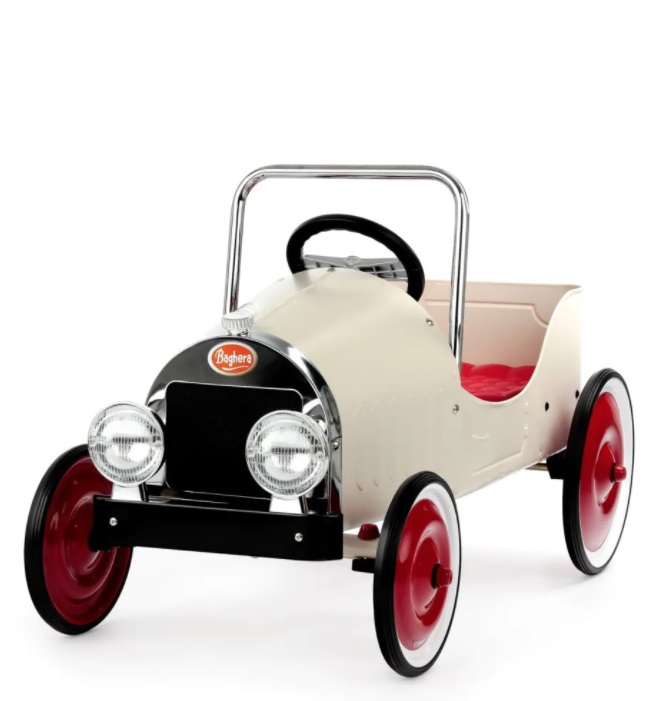New Reasons On Picking Ride On Toys
New Reasons On Picking Ride On Toys
Blog Article
What Should I Know About Battery Life And Charging Time Of An Electric Ride On Children's Car?
Understanding the battery and charging time of an electric kid's ride-on vehicle is vital for ensuring maximum performance and uninterrupted time for play. What do you need to know is the type of battery.
Most electric ride-on cars for kids utilize rechargeable batteries, usually lead-acid or lithium-ion batteries. Lithium-ion batteries last longer life span and quicker charging times than lead acid batteries.
Capacity of Battery
The battery size and capacity, measured in amperehours (Ah) or watthours(Wh) is the determining factor for the amount of time a vehicle can run on a single charge. Batteries with higher capacity provide longer playtime between recharges.
Run Time -
The time of a car's runtime is the amount of time it can run continuously on a single battery charge. This depends on a number of elements, including the battery, the motor as well as the terrain and the weight or the rider.
For electric ride on cars typically, the run time is 30 minutes up to 2 hours with the use of a single battery. Some high-capacity battery packs may provide longer durations.
Charging Time
The charging duration is how it takes for the battery to fully recharge once it's depleted. Charging times may vary according to battery capacity or specifications for the charger.
On average, charging times for electric vehicles range from 8 to 12 hours for a full charge. Certain models can charge faster speeds, especially using lithium ion batteries.
To ensure safety and long-lasting battery life, it is essential to charge the battery in accordance to the manufacturer's instructions. The battery's performance and life span can be affected by overcharging or undercharging.
Charging Method
Electric ride-on vehicles typically come with a charger which plugs into a household outlet. Some models offer quick charging, or have an innovative charger that regulates the rate at which a battery is charged.
To prevent battery damage or harm to electrical systems, check the charger with the ride on vehicle is compatible with the charging port.
Batteries for Other Use
Some electric rides-on-cars offer an option to purchase extra batteries or spare batteries for extended playtime. Having extra batteries on hand allows you to change out battery that is depleted to fully charged ones, thus reducing interruptions between play sessions.
By understanding the battery time and charge times of an electric ride-on kids' vehicle You can be sure that your children have enjoyment and uninterrupted playtime while exploring their surroundings. The battery performance and life can be improved by constantly charging the batteries, and using proper charging procedures. Follow the most popular McLaren kids car for more examples including toy toy cars, ride ons, remote control childrens car, remote control childrens electric cars, digger ride, digger ride, kids electric cars, kids electric cars, childrens ride on, car electric ride on and more. . 
Why Is It That Electric Ride-On Vehicles Cater To Different Skill Levels?
Children can enjoy a thrilling and safe ride with electric ride-on cars that come with multiple control and speed options. This is how and why they are used.
Different children have different levels of skill and confidence when it comes to driving ride-on cars. By offering various speeds, parents are able to modify the car's maximum speed in accordance with their child's capabilities, reducing the risk of collisions or accidents.
For younger children or beginners smaller speeds are the best for a ride-on vehicle. Higher speeds are ideal for older children or children with more experience.
Gradual Learning Curve -
With their multiple speed settings The electric ride-on car helps youngsters develop their driving skills slowly. For beginners, it is possible to familiarize themselves with controls and gain confidence by starting at lower speeds.
Parents can boost the driving speed of their children as they grow more skilled at driving. This can give a feeling of success and advancement.
Parental control
Some electric ride-on vehicles include parental control features that permit parents to limit the maximum vehicle speed by remote. This gives parents peace of mind knowing that they can alter or control the speed to ensure the safety of their child.
Model-specific parental controls can include a limit on speed for remotes and emergency stop buttons for remotes as well as remote steering.
The ability to adapt
As children develop and grow, so do their interest and abilities. Electric ride-ons that have multiple speed settings are flexible and able to adapt to changes in the child's needs.
As a child develops confidence and skill they can progress to higher settings. This makes for an even more exciting journey. In contrast, parents can lower the speed to younger children or those who are less confident.
Customization
The possibility to modify and personalize your riding experience is possible with multiple speeds. Children can select the speed setting which best fits their comfort and degree of excitement.
Certain electric vehicles come with additional controls such as a variable braking and acceleration sensitivity. These options let you fine tune the sensitivity of driving to meet the specific requirements.
Overall, electric vehicles with different settings for speed and control provide a safe ride that is suitable for different ages, abilities, and preferences. These features encourage confidence, skills development and fun and allow parents to supervise and intervene when necessary to ensure the safety of their children. Follow the best read more for electric kids cars for site info including ride on digger, ride electric car, two seater electric cars, two seater childrens electric cars, electric car ride, toy car, toy in car, toy in car, toy the car, lambo toy car and more. . 
What Kinds Of Remote-Controlled Cars Are There? What Are Their Advantages And Disadvantages?
Remote control kids' cars are also referred to remote controlled vehicles or RCs. They are available in a variety of designs, prices and sizes to meet every budget and preference. Here's a brief overview of varieties, sizes, costs as well as pros and cons of remote control children's vehicles The types of remote control Children's Cars
Electric RC Cars – These are battery-powered, remote-controlled vehicles that can be used both indoors and out. They are available in many styles, such as buggies, trucks and sports cars.
Nitro RC Cars – Gas powered remote controlled vehicles that offer greater performance but need more maintenance. Electric RC cars are less bulky and less expensive.
Scale Models (Remote-controlled replicas) Miniatures of real-life vehicles such as planes, trucks, or cars. Scale Models are offered in a variety of scales ranging from 1-10 up to 1-24. Larger scales give more detail and a realistic appearance.
Sizes -
Remote-controlled cars for children are available in a variety of dimensions. They range from small microsized replicas up to large-scale copies. The size of a vehicle can impact its performance and speed.
Micro-sized vehicles are compact and light, and therefore perfect for indoor use and play by younger children. Cars with bigger sizes have more power, durability and are therefore ideal for off-road and outdoor racing.
Prices
Prices for remote-controlled kids' cars will vary based on the specifications, quality, and brand.
The Nitro and Electric RC cars at a higher scale cost anywhere from $100 to $500.
Scale model cars and high-end hobby RCs range from several hundred and over a 1,000 dollars, depending on how precise and powerful they are.
The pros and cons of -
Pros -
Remote Control Children's Cars - These vehicles are fantastic to entertain your children. They can be utilized by adults and children alike.
Learning. Operating a RC car helps children develop hand-eye coordination as well as spatial awareness and problem-solving skills.
Social Interaction - RC cars can be enjoyed with friends and family, promoting the social aspect and cooperation.
Customization – A lot of RC vehicles can be customized with aftermarket upgrades components and accessories that enhance performance and look.
Cons -
Cost - High-end models that have advanced features, like hobby-grade cars, can be expensive.
Children may find it difficult to operate the RC cars initially.
Maintenance - RC vehicles require regular maintenance. This includes cleaning, lubrication and cleaning as also periodic repairs and replacement of parts.
Safety Issues - RC car safety can be compromised by collisions, electrical hazards and other hazards when the vehicles aren't operated with care and supervision by an adult.
Children of all ages will appreciate remote control cars. But it is essential to think about things like cost, size and security before choosing the best model. Hobby-grade RC vehicles are best for kids who are more mature and enthusiastic, while simpler cars are ideal for children who are younger and novice children. Follow the most popular kids cars kidscars.co.uk news for more recommendations including toy in car, childs electric ride on car, childrens ride on, lambo toy car, toy in car, ride on car, car on ride, toy with car, car for toy, electric two seater cars and more. .